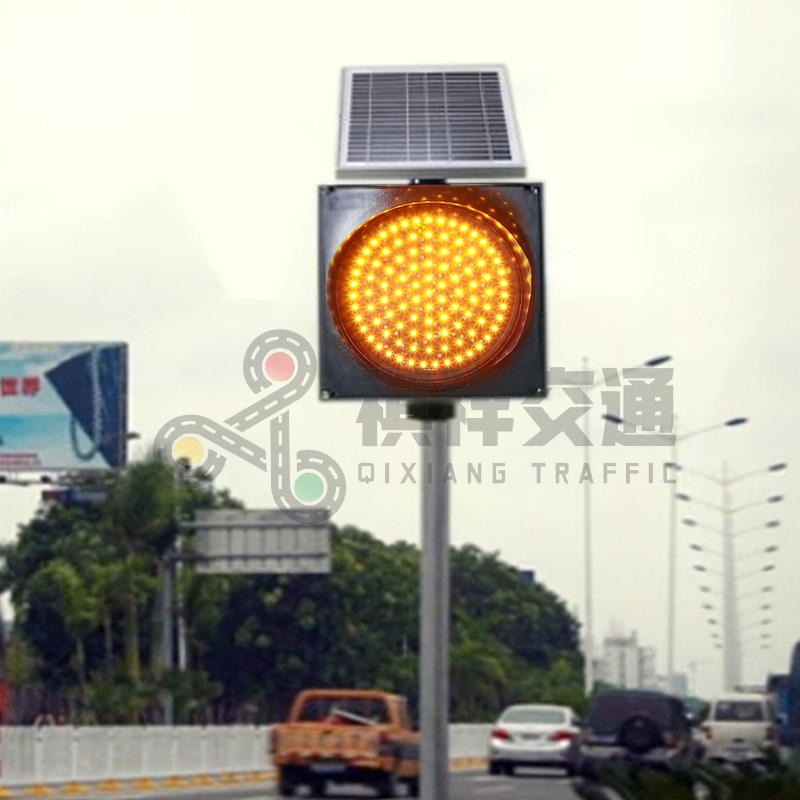Solar powered yellow flashing lights are an effective and energy-efficient way to improve safety and visibility in a variety of environments including roads, construction sites and crosswalks. The lights are powered by solar energy, making them a sustainable and cost-effective option for improving visibility and alerting drivers and pedestrians to potential hazards. There are a few important considerations to keep in mind when installing solar yellow flashing lights to ensure optimal performance and longevity. 
Location and placement
One of the most critical aspects of installing solar yellow flashing lights is determining the best location and placement. Lights should be strategically positioned to maximize visibility and effectively alert oncoming vehicles or pedestrians. When choosing the location of a solar-powered yellow flashing light, factors such as the angle of the sun, potential obstructions, and the specific area where enhanced visibility is needed must be considered. Additionally, it is important to comply with local regulations and guidelines regarding the installation of warning lights to ensure they are installed to safety standards.
Correct installation and fastening
The correct installation and fixation of solar yellow flashing lights is crucial to their stability and service life. It is imperative to use high-quality mounting hardware and ensure the light is securely fastened to the mounting surface. Depending on the installation location, different mounting options may be suitable, such as pole mounting, wall mounting or surface mounting. Careful consideration should be given to the structural integrity of the mounting surface to support the weight and wind resistance of the light. Additionally, appropriate sealing and weatherproofing should be in place to protect the lamp from environmental factors and ensure its durability.
Solar panel orientation and sunlight exposure
Since solar yellow flash lights are powered by the sun, the orientation of the solar panels and their exposure to sunlight is a key factor in their performance. When installing solar yellow flashing lights, it is important to place the solar panels in a location that will receive the greatest amount of sunlight throughout the day. This may involve adjusting the angle of the solar panels to align with the path of the sun and minimize occlusion from nearby objects. Correct orientation and sunlight exposure will optimize the charging efficiency of the solar panels and ensure that the lights have enough power to operate effectively, especially during periods of low sunlight.
Battery capacity and storage
The battery capacity and storage of a solar yellow flash light play an important role in its reliability and functionality. It is crucial to choose a light with sufficient battery capacity to store the energy produced by the solar panel. When installing solar yellow flash lights, it is important to consider local climate and weather conditions to determine the appropriate battery capacity to ensure reliable operation, especially during periods of low sunlight. Additionally, proper maintenance and regular inspections of your battery are critical to ensuring its longevity and continued performance.
Efficient cabling and connections
The wiring and connections of your solar yellow flashing light are critical to its proper operation and integration with the control system. When installing a light, it is important to follow the manufacturer’s wiring and connection guidelines to ensure a safe and reliable electrical connection. Properly insulated and weather-resistant wiring should be used to protect against environmental factors and ensure the safety of electrical components. Additionally, light connections to control systems or timers should be carefully configured to enable synchronized flash patterns and remote monitoring capabilities.
Comply with regulations and standards
When installing solar yellow flashing lights, you must comply with relevant regulations and standards for the use of warning lights in specific applications. This includes adhering to traffic safety regulations, construction site requirements and crosswalk standards. Selected lights must be verified to meet the certifications and approvals required for their intended use, ensuring they are designed and manufactured to the required safety and performance standards. By complying with regulations and standards, installing solar yellow flashing lights can provide a safer and more efficient environment for drivers and pedestrians.
Maintenance and inspection
Once your solar yellow flashing light is installed, regular maintenance and inspections are essential to ensure its continued performance and longevity. Lights, solar panels, batteries, and wiring should be inspected regularly to detect any potential problems or signs of wear and tear. Cleaning solar panels to remove dirt and debris, checking the integrity of mounting hardware, and testing light functionality are important aspects of ongoing maintenance. By implementing a proactive maintenance plan, any issues can be promptly addressed and the lights can continue to operate at their optimal capacity.
In summary, installing solar yellow flash lights requires careful consideration of various factors to ensure their effectiveness and longevity. By addressing key aspects such as location and placement, proper installation and fixing, solar panel orientation and sunlight exposure, battery capacity and storage, efficient wiring and connections, compliance with regulations and standards, and maintenance and inspections, the installation process can be carried out successfully. Solar powered yellow flashing lights provide a sustainable and reliable solution to improve visibility and safety in different environments, and by following the considerations outlined in this article, their installation helps create a safer environment for drivers and pedestrians.
Post time: Jul-19-2024






